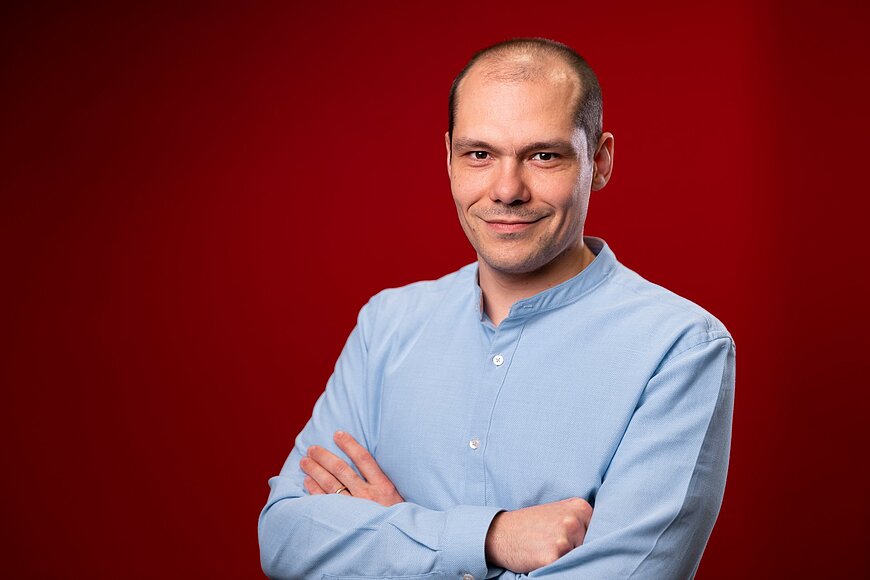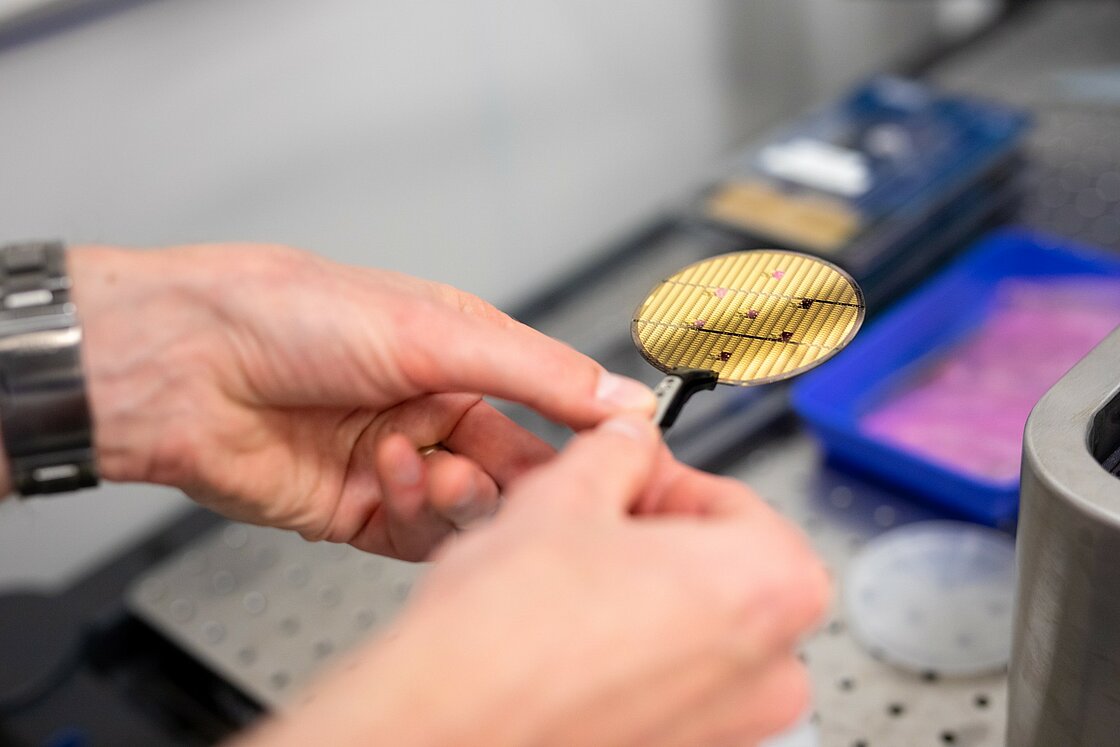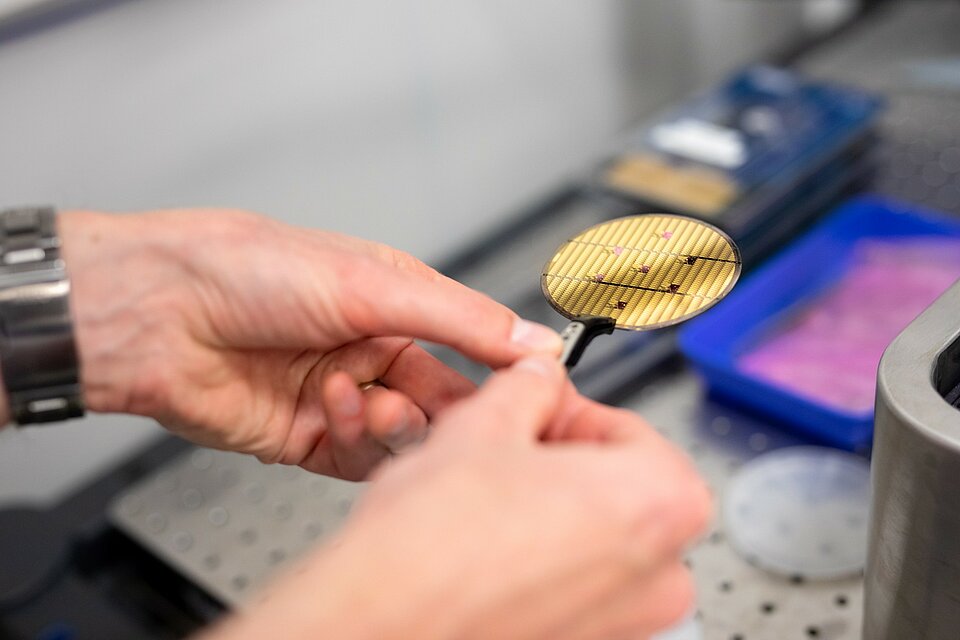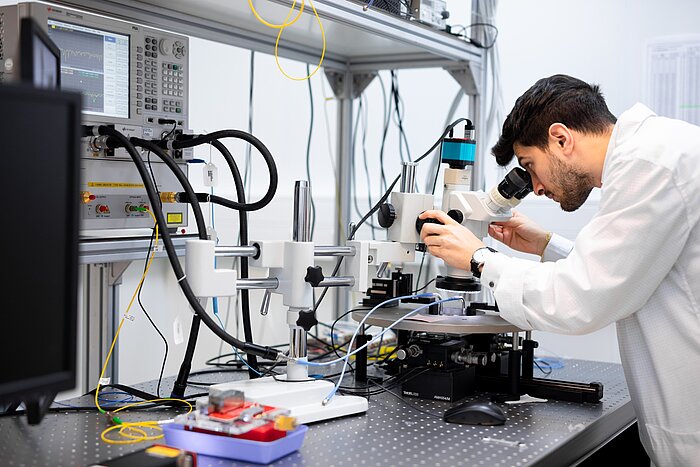Challenging technology that demands continuous improvement
Tommaso Lunghi from Italy is a PIC (Photonic Integrated Circuit) Design Engineer and works on integrated photonics at EFFECT Photonics in Eindhoven. He exchanged his position at the University of Nice for a job at the fast-growing scale-up because of the challenging job content. In his role Tommaso acts as a layout engineer ensuring that our PIC designs are suitable for industrialization. That requires a sound understanding of the entire chain, overseeing both theory and practice, and continuous improvement. ‘It demands being involved and I like that.’

“About a year ago I decided to exchange my position as Photonic Integrated Circuit and Design Engineer at the University of Nice for a job at EFFECT Photonics in Eindhoven,” says Tommaso. “There were several reasons for me to make the choice. First, my job content here is very challenging, and I like EFFECT Photonics’ vision of leveraging photonic integration to deliver internet bandwidth to ever person on earth. Secondly, I wanted to be closer to the industry and combine physics and engineering. EFFECT Photonics is going forward at a fast pace. Over the last two years, we have more than doubled the number of our employees. The technology we are working on is of a high level, and my colleagues are extremely competent experts in their fields.”
Developing integrated circuits using light
“What we are working on is developing photonic integrated circuits based on Indium Phosphide. A photonic circuit can be imagined as an equivalent to an electronic integrated circuit. Instead of manipulating electrons, a PIC manipulates photons through several optical functions all combined into a single mm-size die. The advantage of using light is that it can cover longer distances. Through our technology we can provide a scalable roadmap for producing components for the telecommunications industry. Our integrated optical chips meet the demand for high-bandwidth connections between data centres and back from mobile cell towers making it possible to deliver more data through existing fibre. High-speed communication is going to be crucial in enabling the next generation of technology such as 5G, IoT, connected and automated mobility and more. Last year we officially went to market with our technology, which is now commercially available for fibre optics.”


Being able to oversee both theory and practice
“In order to do that and make sure the process can be industrialized you have to draw out the entire fabrication process. My main role in this process is to take the design that my colleagues have made and translate it into a layout that can be manufactured. To achieve that, you need to master the theory and know how to apply it in practice. You must understand the entire chain. My team and I form a sort of bridge between R&D and all other departments around us. A lot of information goes through us.”
Continuous improvement means a high level of involvement
“What we are currently proving is that when you know the basis of developing these PICs you can easily scale-up. In university your goal is to make proof-of-concept demonstrations. Here you need to demonstrate that what you have invented can be scaled and everything you encounter during that process needs to be controlled to guarantee high yield and standardized procedures. Every single department within EFFECT Photonics works on continuous improvement. That also means that there is a high level of involvement and I like that.”
Very appealing job content
“I got to know EFFECT Photonics because the company approached me while I was working at Institut de Physique de Nice. There I was using similar open-source software among others from a Python library that is partly created by Bright Photonics, a PIC design company also based in Eindhoven. When I was approached by the recruiter, I wasn’t really looking for another job, but the job content was very appealing.”
Northern Europe known for advanced technology and good work-life balance
“Furthermore, my family is used to moving around. We’ve lived in Pisa, Geneva and Nice. Northern Europe appealed to use because technology is in a very advanced and developed state here. The lifestyle here is also less stressful, the work-life balance is better. Therefore, you have more time to focus on other topics. What is also good here is that children still play together at each other’s houses after school. In this way you also meet their parents and make contact. You don’t see that in France.”
Settling in the Netherlands is easy
"Settling in here in general was easy. The administrative part is understandable, and people are very helpful. Eindhoven is a very international city which makes it easy to connect. Even finding a house was not that hard. The Dutch housing market is overheated but for us it was relatively easy to find a rental house. Our experience of public school is also good: they seem to be focused on the harmonious development of each child. We like the respect that is paid towards children in the Netherlands. And we enjoy our spare time.”
